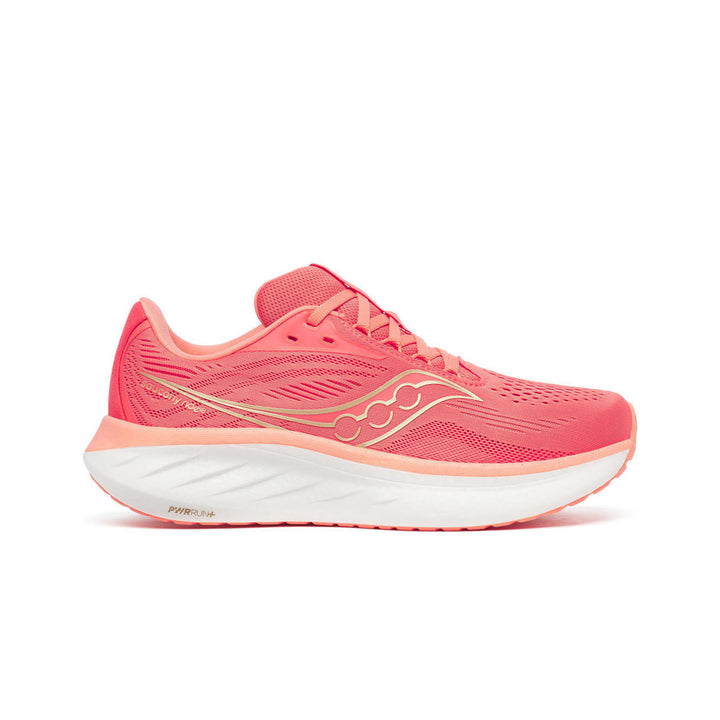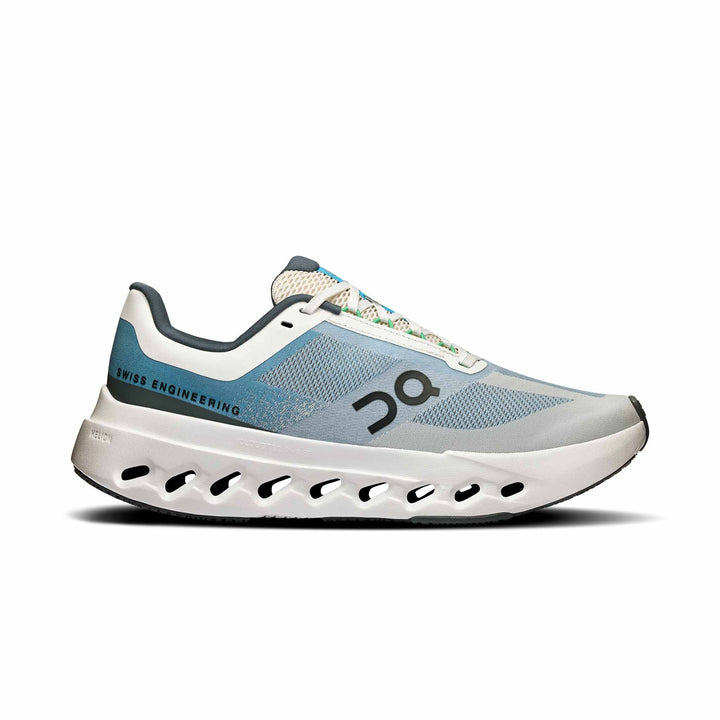No two runners are the same. We all run differently and every run is a unique journey. While some runners strive for a specific experience on each run, others seek different sensations for varying paces or types of runs. For these reasons, we split our men’s and women’s running shoes into three experience categories: The Float Experience, The Enhanced Energy Experience and The Connected Experience.
Whether you’re looking for soft running shoes for your everyday miles, more responsive running shoes that feel great over a range of paces, bouncy running shoes that tick all the boxes, or carbon fibre plated running shoes that elevate your performance - you’ll find the perfect pair to match your needs.
If you’d like to feel like you're floating along on easy to steady paced runs, check out the road running shoes in The Float Experience. All of the models in this category should feel soft and plush underfoot. Not only does soft cushioning feel very comfortable, it helps reduce how much your joints flex - helping take the load off them. When you’re running at slower speeds, your feet will typically spend more time on the ground than if you’re running faster. Soft running shoes slow down the speed of pronation and help reduce internal rotation - making those daily miles or long runs feel a little bit easier.
The Float Experience category includes various options. You can choose from a range of cushioning types, such as Brooks’ luxurious DNA LOFT, Hoka’s marshmallow-like cushioning, Altra’s absorbent EGO MAX, Nike’s resilient React foam, True Motion’s bouncy U-Tech, Saucony’s energetic PWRRUN, and On’s revolutionary CloudTec. We also have a range of midsole geometries available. While some of the options look like more traditional road running shoes, a number of models in this category feature a curved midsole - commonly referred to as a rocker. If you’re wondering what the benefit of a rocker in a running shoe is, the curved nature of the midsole can aid forward momentum, reduce braking forces and help reduce the load on lower leg muscles.
We suggest running shoes in The Float Experience are best suited to slower to steady paced runs, because soft running shoes will typically return less energy than more responsive shoes. Simply put, when you’re trying to run faster, you want to get as much of the energy back that you’re putting into the shoe.
The road running shoes in The Enhanced Energy Experience category include a range of options for various types of runs and paces. A common denominator of all the models in this collection, is that they feature a special foam and/or propulsive structure, such as a carbon fibre plate. When we say special foam, we mean superfoam. A superfoam is a material that is both exceptionally soft and energy returning. Road running shoes that feature superfoams, without the addition of a carbon fibre plate, such as the Nike Invincible Run, are best suited to slower to steady paced runs. The qualities of this style of running shoe help make running feel easier - whether it be recovery runs or long distance training miles. As they also deliver amazing energy return, they feel better at steadier to faster speeds than shoes which are predominantly soft - such as the models in The Float Experience.
If you have ambitions of running faster times, be it in training sessions or events, there are running shoes that can help you. Some of the running shoes in The Enhanced Energy category have properties that have been proven to improve performance - through an improvement in running economy. To explain further, running economy can be defined by how much oxygen is being used to run at a given speed. Combining a superfoam with a propulsive structure, such as a nylon plate, carbon fibre plate or carbon infused rods, can reduce the amount of effort to run at a given speed. This may enable you to run faster, or run at a said speed for longer, as less energy is being used. While many runners may opt for this type of running shoe in races, there are multiple benefits for using such options for training. For example, while it’s anecdotal evidence, many runners find their legs feel fresher and recover sooner after strenuous sessions, such as fast-paced interval runs or long marathon intensity workouts. It’s also easier to hit target times in pace focused runs. This is why carbon plated running shoes, such as the Nike Vaporfly and Nike Alphafly, and adidas Adios Pro - which features carbon fibre rods, are suitable for runners of all paces and not just elites. Pace is always relative, and anyone who wants to get to the finish line in less time, or not feel as sore after tough runs, could benefit from this type of running shoe.
For those who prefer a more responsive feeling running shoe, you can choose from a number of options in The Connected Experience category. The running shoes in this category still feature great protection, such as Nike’s React foam, On’s CloudTec, adidas’ Boost material and Mizuno’s Wave Plate technology. However, they’re constructed in a manner that makes them feel more responsive than softer running shoes. This has two key benefits for running. Firstly, they return more of the energy that you put into them than softer shoes. Secondly, the firmer construction should result in a greater amount of joint flexion, which helps runners utilise the stretch shortening cycle: when muscle and tendon lengthening is quickly followed by the structures shortening, energy is returned. More responsive running shoes can reduce ground contact time, in comparison to a softer shoe, which further assists with forward momentum.
This makes running shoes in The Connected Experience a good choice for running at a range of paces. Models such as the Nike Air Zoom Pegasus or Mizuno Wave Rider are more than cushioned enough to cope with long steady miles, but respond if you inject some pace into your run. However, softer running shoes may make slower to steady paced runs feel easier, given that joints will typically go through less flexion. This is a common reason for runners switching between alternate pairs of running shoes for different runs. It’s also important to note that our ability to tolerate certain loads may vary on a given day. Tired and fatigued muscles may benefit from the extra cushioning provided by soft running shoes. However, fresh and rested muscles are likely to enjoy a more energetic underfoot experience.
The Float and Connected Experience categories both feature a range of neutral and stability road running shoes. Once you’ve picked how you’d like your shoes to feel, you can choose your level of support. Neutral running shoes offer support for your feet and legs - as they help reduce the speed of pronation, support arches, aid propulsion, help lower internal leg rotation and reduce joint flexion. These are some of the differences between a generic training shoe and a shoe that has been designed for running. While neutral running shoes offer a degree of support, if you have greater ranges of pronation and internal leg rotation, a stability running shoe may be a more suitable choice. Stability running shoes feature structures that actively reduce greater ranges of motion, helping reduce the likelihood of problems occurring as a result of areas being overloaded.
The Enhanced Energy Experience category is predominantly made up of neutral running shoes. This is down to the fact that denser structures and supportive features would likely inhibit some of the energy return provided by these models. As superfoams are inherently unstable, even with the addition of a carbon fibre plate, few runners look very stable in them. However, this type of running shoe creates a lot of forward momentum, which lowers the stress that’s placed on feet and legs. This is why many runners may run in a stability running shoe for their daily miles, but can run in a carbon plated running shoe for faster paced runs or races.
 Make 3 interest-free payments.
Make 3 interest-free payments. 

























